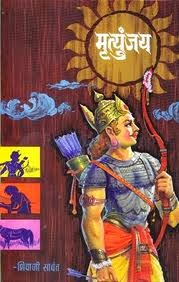Gateway of India
 The leading English newspaper Hindustan Times had recently come out with a campaign called "No TV Day" where the intention was to ditch the television and explore the city. I have always lent my support towards the campaigns the newspaper does primarily because they concern the larger interest of the general public. As always, the No TV Day was a rewarding experience. It made me feel like a tourist in a city where I lived for the past 18 years.
The leading English newspaper Hindustan Times had recently come out with a campaign called "No TV Day" where the intention was to ditch the television and explore the city. I have always lent my support towards the campaigns the newspaper does primarily because they concern the larger interest of the general public. As always, the No TV Day was a rewarding experience. It made me feel like a tourist in a city where I lived for the past 18 years.
The Gateway of India is one of Mumbai's most famous monument and is often the starting point for most tourists who visit the city. The Gateway of India is important as it serves as a transit point for a cruise around the Bombay Harbour in luxury boats. Opposite the Gateway of India stands the Royal Taj Mahal Hotel and the Taj Towers, which serves as an example to the resilient spirit of Mumbai after the tragic 26/11 attacks. There is also a statue of the Maratha prince Chhatrapati Shivaji Maharaj in front of the Gateway of India.
The Gateway of India was built as a triumphal arch to commemorate the visit of King George V and Queen Mary to Bombay in December 1911. The Gateway of India is intricately carved with four turrets and latticework carved into the yellow basalt stone. The foundation stone for the Gateway of India was laid on March 31, 1911 by the then Governor of Bombay Sir George Sydenham Clarke and the final design submitted by the Scottish architect George Wittet was sanctioned in August 1914. Between 1915 and 1919, work proceeded on the reclamation at Apollo Pier for the land on which the Gateway and the new sea wall would be built. The foundations were completed in 1920. The construction was finally completed in 1924 and the Gateway of India was inaugurated on December 4 1924 by the Viceroy, Earl of Reading.
The Gateway of India is built from yellow Kharodi basalt and reinforced concrete. The stone was locally obtained and the perforated screens were brought in from Gwalior. The design together is a combination of both the Hindu and Muslim architectural styles. The arch is in the typical Muslim style while the decorations placed outside are in the Hindu style. The central dome is about 48 feet in diameter and 83 feet above ground at its highest point. The whole harbour front was realigned in order to come in line with a planned esplanade which would sweep down to the centre of the town. The cost of the construction was Rs. 21 lakhs, which was borne mainly by the Government of India. However, due to the lack of funds, the approach road was never built and the Gateway of India now stands at an angle to the road leading up to it.
The colonial rule ended in 1947 and the colonial symbol also became a sort of epitaph while the last of the British troops to leave India, the First Battalion of the Somerset Light Infantry, passed through the Gateway in a ceremony on 28 February, 1948.


Comments